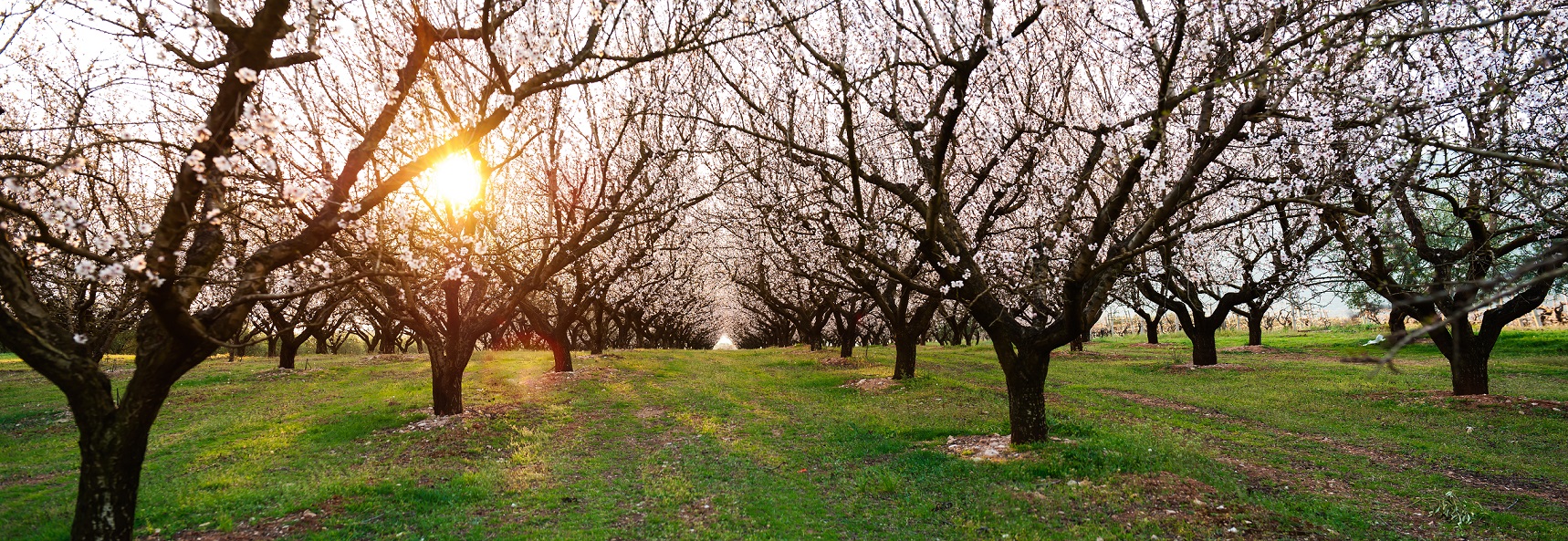
From Spanish Missions to Global Markets: The Rise of California Almonds
 The California almond industry, now a global leader, boasts a rich history deeply intertwined with the state’s agricultural evolution. From its humble beginnings in the 18th century to becoming a powerhouse of almond production, the journey of California almonds is a testament to innovation, dedication, and the state’s ideal growing conditions.
The California almond industry, now a global leader, boasts a rich history deeply intertwined with the state’s agricultural evolution. From its humble beginnings in the 18th century to becoming a powerhouse of almond production, the journey of California almonds is a testament to innovation, dedication, and the state’s ideal growing conditions.
Early Beginnings: Spanish Missions and the Introduction of Almonds
The story of California almonds begins in the late 18th century with the arrival of Spanish missionaries. These missionaries established a series of missions along the California coast, bringing with them a variety of crops, including almonds. Recognizing the parallels between California’s Mediterranean climate and the almonds’ native regions in the Mediterranean basin, the missionaries saw great potential for almond cultivation. California’s mild, wet winters and hot, dry summers created conditions ideal for growing this nutrient-rich and versatile nut, which would later earn a reputation as one of the world’s healthiest nuts.
While the missionaries planted the first almond trees with enthusiasm, their early efforts faced considerable challenges. The lack of advanced irrigation systems meant crops were reliant on inconsistent rainfall. Additionally, limited knowledge about soil composition, pest control, and optimal planting techniques hindered the initial yield. These obstacles slowed the growth of almond cultivation, leaving it as a minor agricultural pursuit during the early years of settlement.
Despite these setbacks, the Spanish missions sowed the seeds for an industry that would one day thrive. The missionaries’ dedication to introducing almonds and other crops laid a foundation for California’s eventual rise as a leader in almond production. Their efforts underscored the potential of almonds as a valuable crop, which would become increasingly apparent in the centuries that followed.

Building the Foundation: The Evolution of Almond Farming in California
The growth of California’s almond industry from scattered mission plantings to global prominence required centuries of agricultural innovation. As the state’s population expanded in the 19th and 20th centuries, farmers began to recognize almonds’ commercial potential. Advances in irrigation technology, such as the introduction of canal systems and, later, drip irrigation, transformed the state’s agricultural landscape. These innovations ensured a consistent water supply for almond orchards, allowing growers to expand their acreage and increase production.
Scientific research further bolstered the industry. By identifying the best soil types and climates for almond cultivation, researchers helped farmers select optimal planting sites. The development of pest-resistant almond varieties and improved farming techniques reduced crop losses and boosted yields. California’s fertile Central Valley, in particular, emerged as the heart of almond production, thanks to its ideal combination of climate, soil, and water resources.
By the mid-20th century, California’s almond industry was beginning to establish itself as a global powerhouse. Cooperative marketing organizations like the Almond Board of California played a crucial role in promoting California almonds as a premium product. These organizations also supported research and education initiatives, helping farmers adopt sustainable practices and position California as the world’s top almond grower.
The 19th Century: Advancements and Expansion
The mid-19th century marked a turning point for California's almond industry. The Gold Rush of 1849 brought an influx of settlers to California, and with them, agricultural knowledge and advancements. Farmers began experimenting with different crops, including almonds. The establishment of the Central Valley's irrigation systems in the late 1800s played a crucial role in transforming the arid landscape into fertile farmland.
During this period, the University of California also started conducting agricultural research, providing valuable insights into almond cultivation. Improved irrigation techniques, pest control methods, and the development of almond varieties better suited to California's climate all contributed to the growth of the industry. These advancements laid the groundwork for California’s emergence as a leader in almond production and established almonds as one of the state’s most promising crops.
Photo Credits
1st ID 82121582 | Almond © Hans Geel | Dreamstime.com
2nd ID 24125621 | Almond © Fotis Mavroudakis | Dreamstime.com
3rd ID 142172272 © Durson Services Inc. | Dreamstime.com



